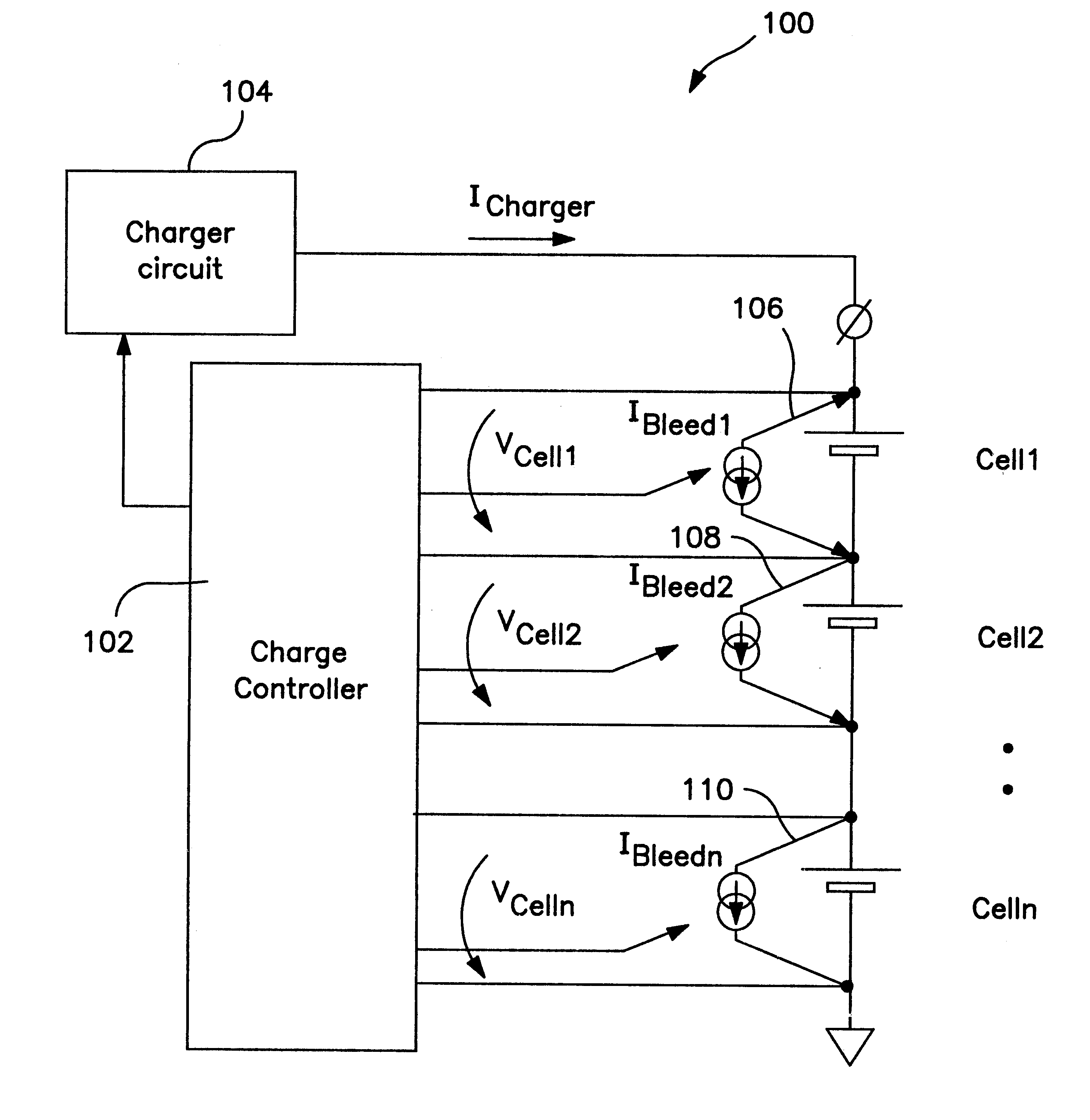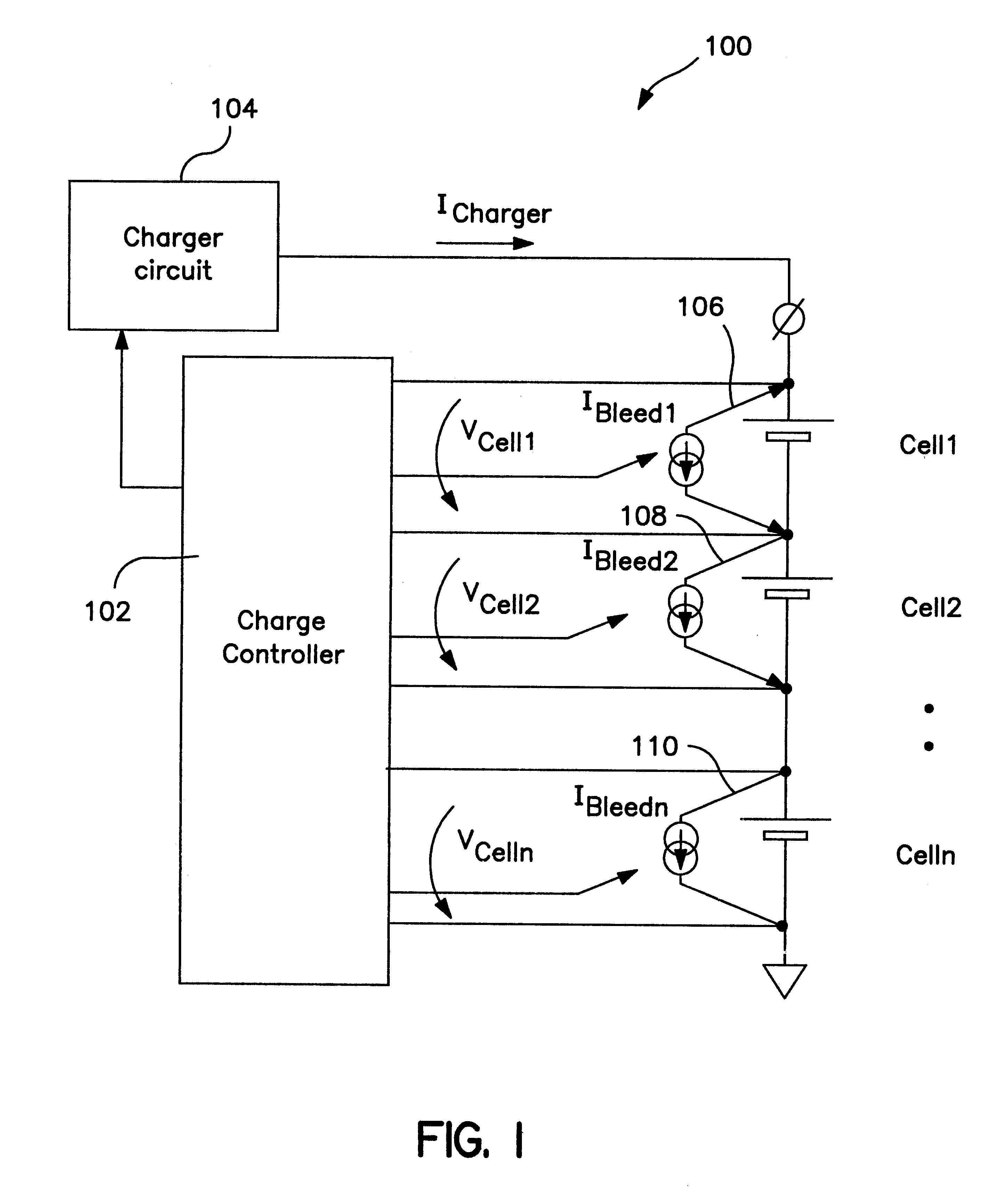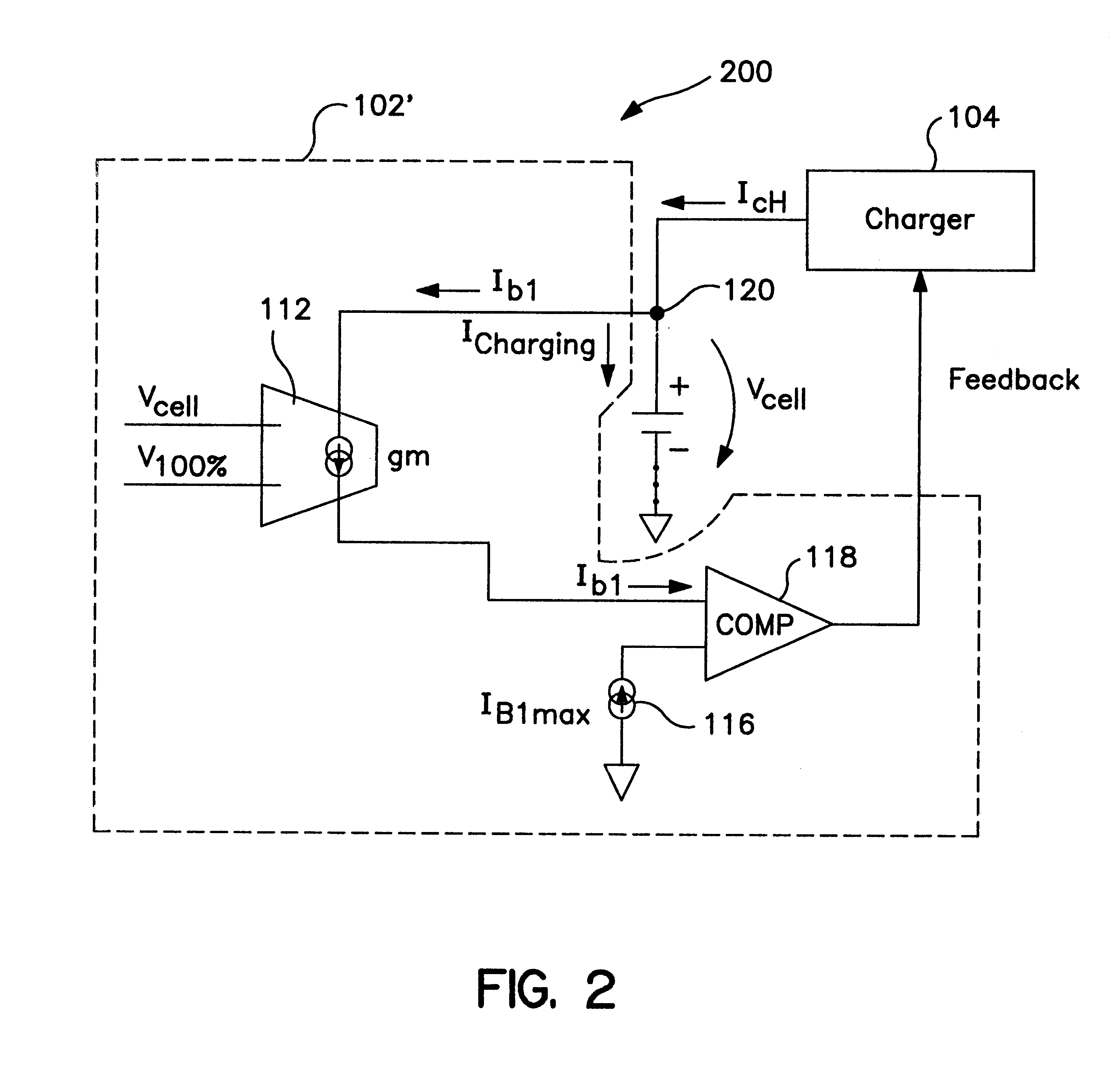Battery cell charging system having voltage threshold and bleeder current generating circuits
a battery cell and charging circuit technology, applied in the direction of electrochemical generators, secondary cell servicing/maintenance, transportation and packaging, etc., can solve the problems of reducing the manufacturing efficiency of battery cells, reducing the manufacturing efficiency of batteries, and only providing a rough approximation of individual cell voltages
- Summary
- Abstract
- Description
- Claims
- Application Information
AI Technical Summary
Problems solved by technology
Method used
Image
Examples
Embodiment Construction
FIG. 1 is a block diagram of an exemplary cell balancing circuit of the present invention. Essentially, the cell-balancing circuit 100 operates to control the charge distribution among non-identical cells in a battery pack during the charge process. The circuit monitors the voltage of each individual battery cell, Cell1, Cell2 . . . Celln, that are connected in series within the battery, and adjusts the amount of charging current based on the cell voltage. The cells in a battery pack typically present a certain degree of charge capacity imbalance. Therefore, in conventional charging systems, the cells with a lower capacity will be charged faster than those with a larger capacity. In such a condition, there is no way to achieve 100% charging for all the cells in the battery, since either the larger capacity cells will remain undercharged, thereby reducing the effective capacity of the battery, or the lower capacity cells will be overcharged, with detrimental effects on long-term cell...
PUM
 Login to View More
Login to View More Abstract
Description
Claims
Application Information
 Login to View More
Login to View More - R&D
- Intellectual Property
- Life Sciences
- Materials
- Tech Scout
- Unparalleled Data Quality
- Higher Quality Content
- 60% Fewer Hallucinations
Browse by: Latest US Patents, China's latest patents, Technical Efficacy Thesaurus, Application Domain, Technology Topic, Popular Technical Reports.
© 2025 PatSnap. All rights reserved.Legal|Privacy policy|Modern Slavery Act Transparency Statement|Sitemap|About US| Contact US: help@patsnap.com



